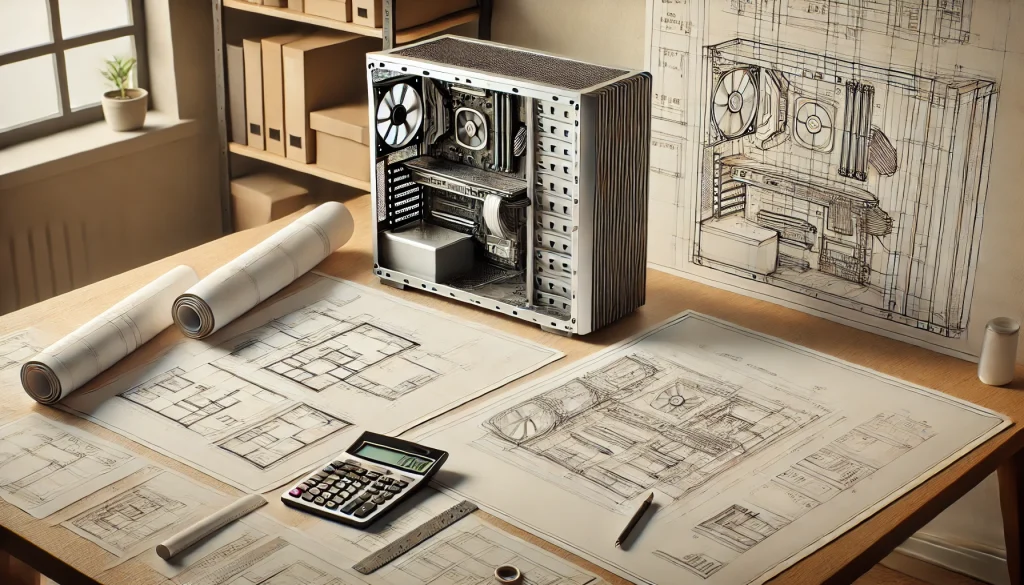Uncategorized
How to Upgrade Your Computer: A Step-by-Step Guide
Upgrading your computer can significantly enhance its performance, making it faster, more efficient, and capable of handling modern applications. Whether you want to improve gaming performance, increase storage, or boost multitasking capabilities, upgrading specific components is the key. This guide provides clear steps to help you upgrade your computer effectively.
Understand Your Upgrade Goals
Start by identifying what you want to achieve with the upgrade. Common goals include enhancing system speed, improving gaming performance, adding storage capacity, or ensuring compatibility with modern software. Having a clear purpose will guide your decision-making process.
Identify Components for Upgrade
There are several computer components you can upgrade to meet your needs.
- RAM: Increases multitasking efficiency and overall system responsiveness.
- Storage: Upgrading to an SSD speeds up boot times and file transfers.
- Graphics Card: Essential for better gaming and graphic-intensive tasks.
- Processor: Enhances computing power for demanding applications.
- Motherboard: Provides compatibility with newer technologies.
- Power Supply Unit: Ensures adequate power for upgraded components.
- Cooling Systems: Keeps your system running at optimal temperatures.

Check Your Computer Specifications
Understanding your current hardware is essential before purchasing upgrades.
- On Windows, search for “System Information” to view details about your processor, RAM, and motherboard.
- On macOS, select “About This Mac” to check your computer’s specifications.
- Use third-party tools like CPU-Z or HWMonitor for a detailed breakdown of your hardware.
Make a note of component details like RAM type, storage interface, and motherboard model to ensure compatibility with new parts.
Research and Choose Components
Once you know your specifications, research compatible components that align with your upgrade goals.
- If your computer is slow, upgrading to an SSD will make a noticeable difference.
- For gaming, a more powerful graphics card is often the best investment.
- If you experience lag during multitasking, consider adding more RAM.
Choose components that fit your budget while delivering the performance improvements you need.

Back Up Your Data
Before you begin the upgrade process, back up all your important files. Use an external drive or cloud storage to safeguard your data in case of unexpected issues.
Prepare Your Workspace
Set up a clean, well-lit workspace to perform the upgrade.
- Turn off your computer and unplug all cables.
- Remove the side panel of the computer case to access internal components.
- Use an antistatic wrist strap or mat to protect components from static electricity.
Upgrade the Components
Upgrading RAM
Locate the RAM slots on your motherboard. Remove the existing RAM by releasing the clips at each end. Align the notch on the new RAM stick with the slot and press down firmly until the clips snap into place.
Upgrading Storage
If adding an SSD, locate the SATA ports or M.2 slot on your motherboard. For a 2.5-inch SSD, connect it using a SATA cable and secure it in a drive bay. For an M.2 SSD, insert it into the M.2 slot and secure it with a screw.
Upgrading the Graphics Card
Remove the old graphics card by unscrewing it from the case and unplugging its power connectors. Insert the new card into the PCIe slot, secure it with screws, and reconnect the power cables.
Upgrading the Processor
Unlock the CPU retention lever to remove the old processor. Clean the heat sink with isopropyl alcohol to remove old thermal paste. Place the new processor into the socket, apply fresh thermal paste, and reattach the heat sink.
Upgrading the Power Supply
Disconnect all cables from the old power supply and unscrew it from the case. Install the new power supply, secure it in place, and reconnect the cables to the motherboard and other components.
Reassemble and Power On
Once the upgrades are complete, reattach the side panel of your computer case. Reconnect all cables and power on your system.
Install or Update Drivers
After booting up, ensure your system recognizes the new components. Install or update drivers as needed. For graphics cards, download the latest drivers from the manufacturer’s website. Check for firmware updates for new SSDs or other hardware.
Test Your System
Run your computer through typical tasks to ensure the upgrades are working correctly. Use benchmarking tools to evaluate performance improvements and check for stability issues.
Troubleshooting Common Issues
If your system doesn’t boot or displays errors, double-check the connections and placement of upgraded components. Ensure your power supply meets the new power requirements. Reset your BIOS settings if necessary.
Enjoy Your Upgraded System
Upgrading your computer can extend its lifespan and improve your overall experience. By carefully selecting compatible components and following these steps, you can ensure a smooth upgrade process. Take the time to test and optimize your system, and enjoy the enhanced performance of your upgraded computer.


